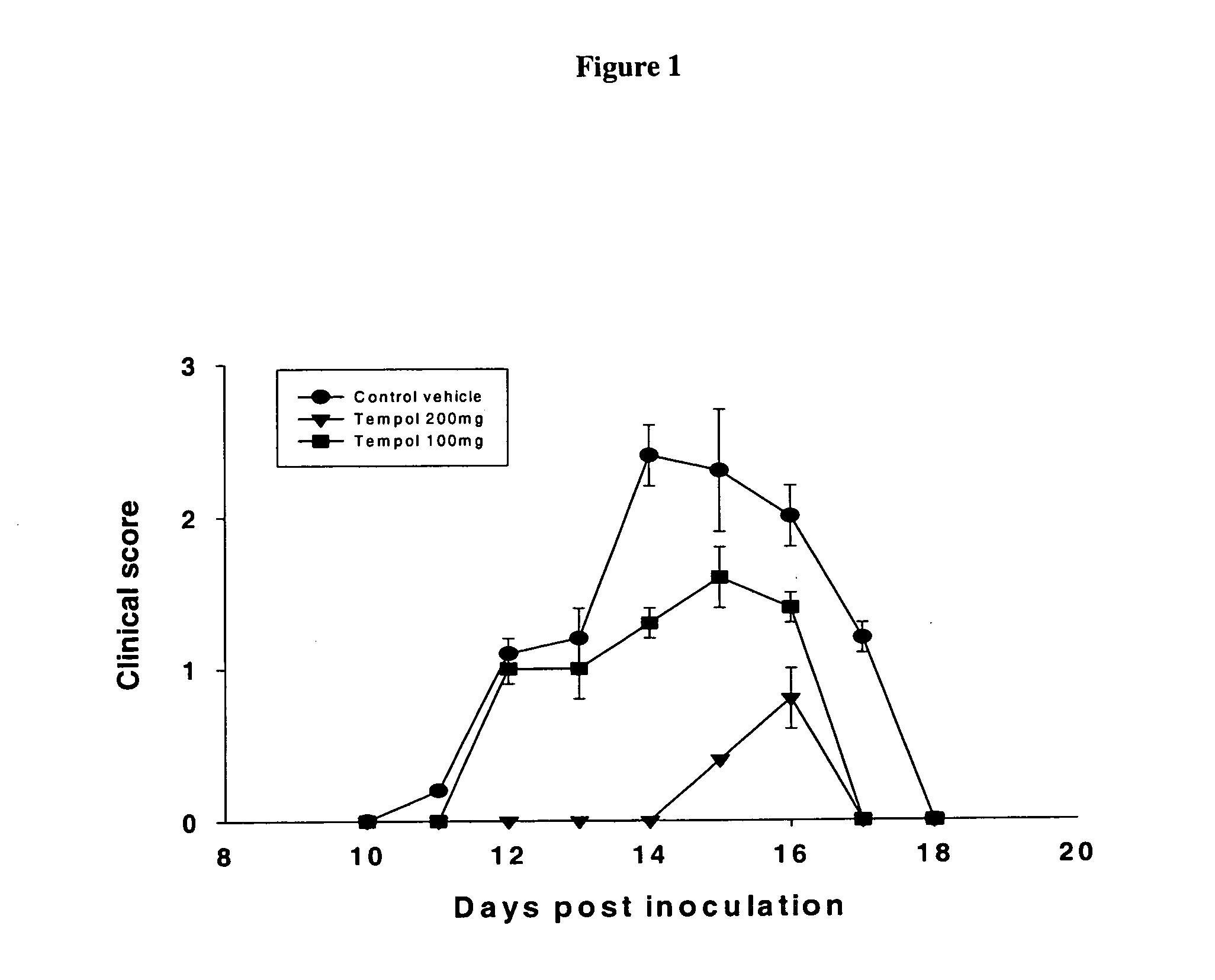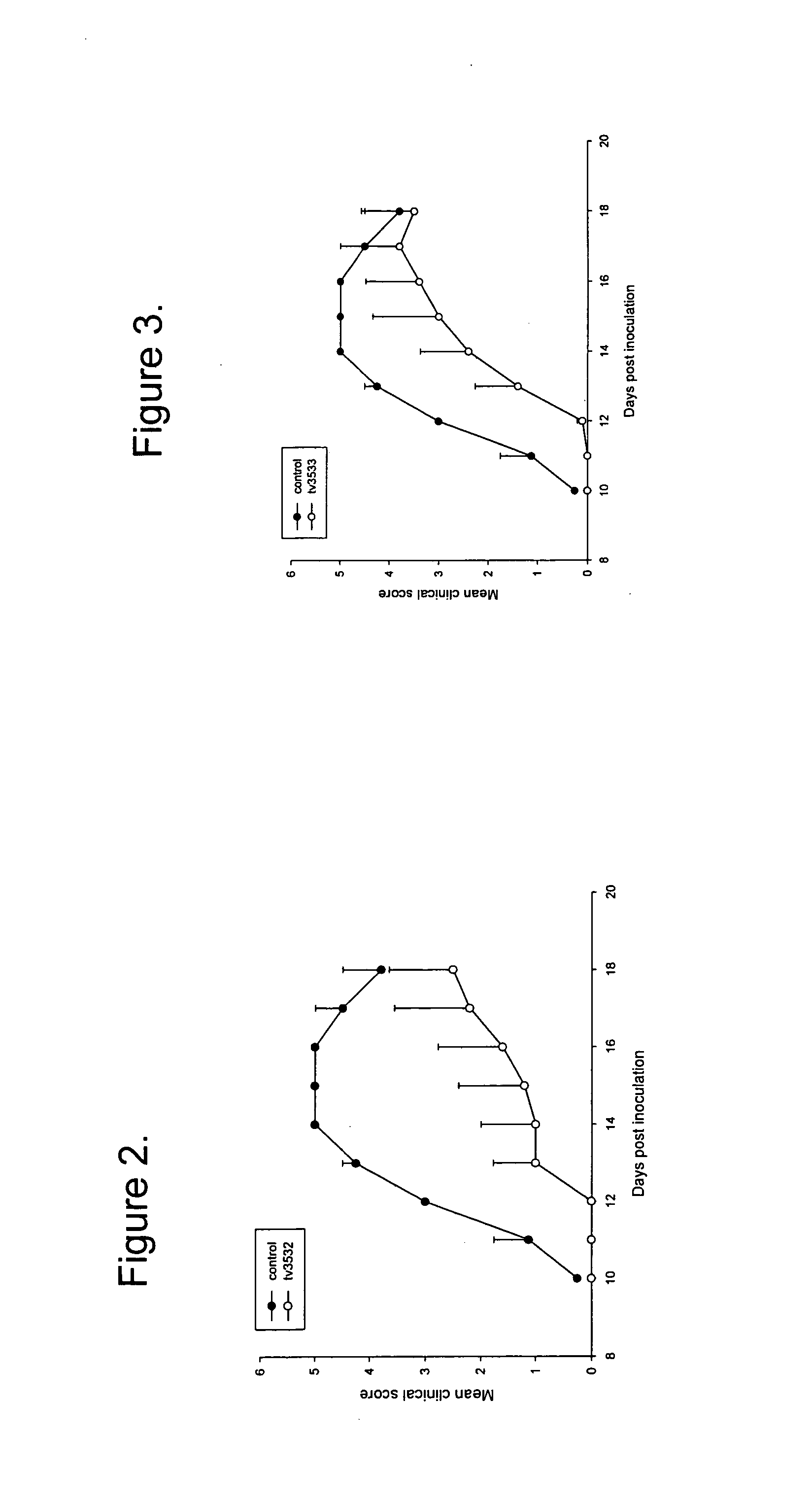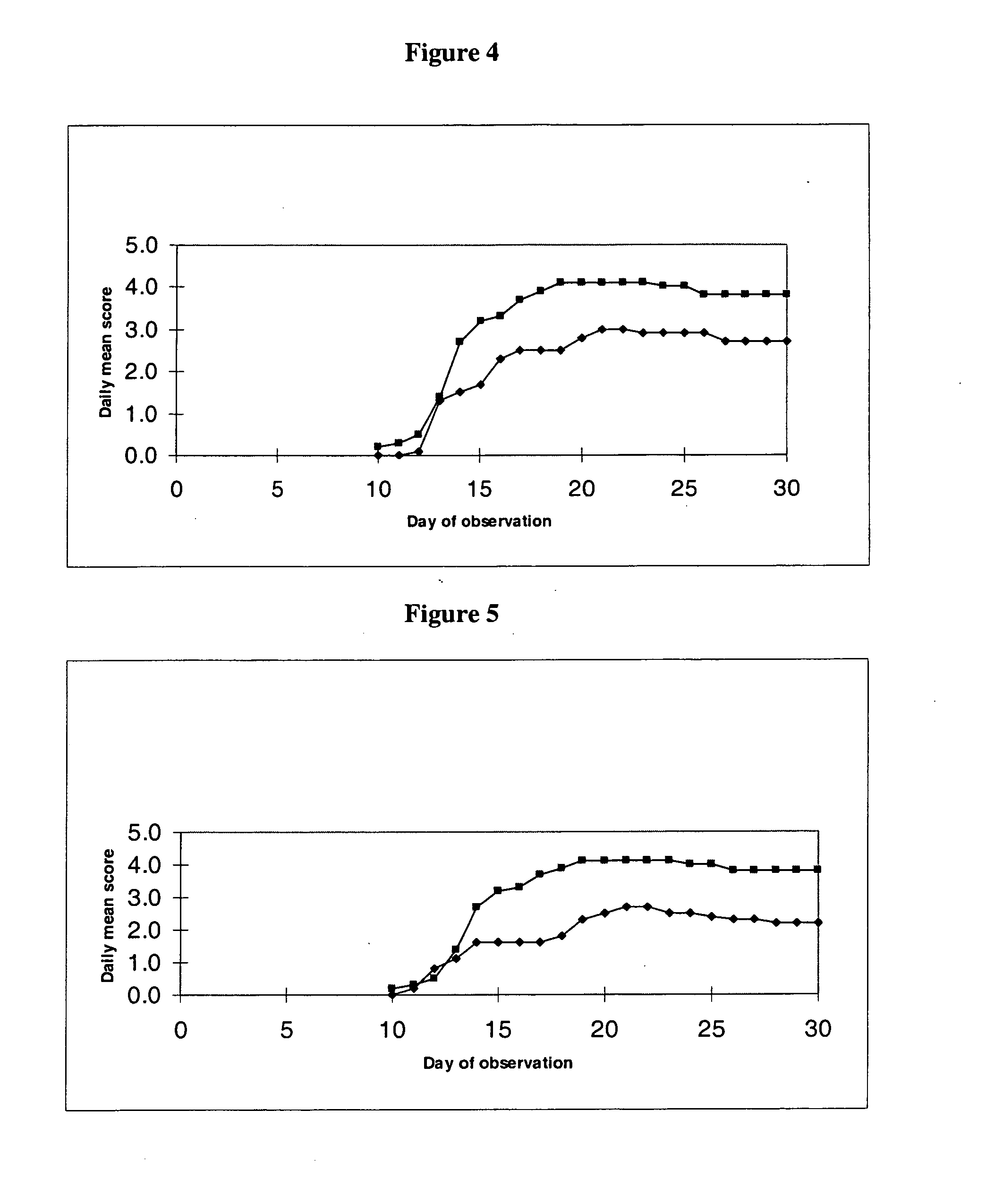Indanylamino uracils and their use as antioxidants and neuroprotectants
a technology of indanylamino uracils and antioxidants, applied in the field of nitric oxide, can solve the problem of extremely fast reaction time, and achieve the effect of preventing the oxidation of lipids and preventing the lysis of human red blood cells
- Summary
- Abstract
- Description
- Claims
- Application Information
AI Technical Summary
Benefits of technology
Problems solved by technology
Method used
Image
Examples
example 1
6-Dimethylamino-1-aminoindan
1.1 From 6-Dimethylamino-1-indanone
1.1.1 6-Dimethylamino-1-indanone
[0204] 6-nitro-1-indanone (6.67 g, 0.038 mol) was reductively methylated as described by Hasbun et al., J. Med. Chem. (1973), 16:847 and Biggs et al., J. Med. Chem. (1976) 19:472. This crude product was purified either by crystallization (75 ml, 1:2 iPrOH:H2O), in which case 4.88 g (74%) yellow crystalline solid (mp: 78-80° C.) was obtained, or by column chromatography (hexane: EtOAc-2:1).
[0205]1H-NMR (CDCl3) δ: 7.33 (d, 1H, J=8 Hz, H-4), 7.05 (dd, 1H, J=8, 2.5 Hz, H-5), 7.00 (d, 1H, J=2.5 Hz, H-7), 3.01 (t, 2 H, J=6 Hz, H-2,3) , 2.97 (s, 6 H, NMe2), 2.66 (t, 2H, J=6 Hz, H-2,3). 13C (CDCl3) δ: 207.78 (C=O), 150.11, 143.60, 137.71 (3×C, C-3a, C-7a, C-6), 126.71, 120.52, 105.11 (3×CH, C-4, C-5, C-7), 40.78 (NMe2), 36.89 (CH2CO), 24.69 (COCH2CH2). MS (CI) (NH3) m / z (176, MH+).
1.1.2. 6-Dimethylamino-1-aminoindan
1.1.2.1 Via the Oxime
[0206] A mixture of 6-dimethylamino-indanone (10 g, 0.0...
example 2
4-Dimethylamino-1-aminoindan
2.1 4-dimethylamino indanone
[0218] 4-Nitro-1-indanone (9.39 g, 0.053 mol) was hydrogenated in MeOH (150 ml) with paraformaldehyde (13.72 g, 0.457 mol) and 5% Pd / C (1.125 g, 54.2% water) as described for the 6-isomer in Example 1. Following the work-up and purification procedures employed for the 6-isomer in Example 1, 6.35 g (69%) of 4-dimethylamino indanone was obtained.
[0219]1H-NMR (CDCl3) δ: 7.35 (dd, 1H, J=7.5 Hz, H-5), 7.33 (t, 1H, J=7.5 Hz, H-6), 7.08 (dd, 1H, J=7.5, 1 Hz, H-7), 3.13 (t, 2 H, J=6 Hz, H-2,3), 2.88 (s, 6 H, NMe2), 2.68 (m, 2H, H-2,3). MS (CI) (NH3) m / z (176, MH+).
2.2 4-dimethylamino-1-aminoindan
[0220] 4-Dimethylamino indanone (8.6 g, 0.049 mol), NH4OAc (30 g, 0.389 mol) and NaCNBH4 (5.15 g, 0.082 mol) were dissolved in MeOH (250 ml) and the reaction mixture was refluxed under N2 for 8 h and then stirred for 15 h at rt. The reaction mixture was worked up as described in Example 1, to afford 8.4 g of the crude product as a brown li...
example 3
6-amino-1-indan-1-yl-1H-pyrimidine-2,4-dione (1)
[0222] 1-Indanylurea (57.23 g, 0.325 mol, prepared from 1-aminoindan and sodium cyanate) and ethyl cyanoacetate (37.65 g, 0.33 mol) were added to a solution of sodium (8.23 g, 0.36 g atom) in ethanol (420 ml). A clear solution was obtained on stirring and heating under reflux. The solution was maintained at reflux for 24 h, cooled to 40° C. and treated with 1 N HCl (500 ml). The precipitated solid (unchanged urea, 14.74 g, 25.8% recovery) was removed by filtration and the filtrate (including washings) was ice-cooled and the solid collected, washed with ethanol / water 2:3 and water and dried in vacuo (37.3 g, 47.2% yield, 63.6% based on net urea consumed). A sample of the product (5.11 g) was recrystallised from acetic acid (45 ml) and water (35 ml) using decolourising charcoal to give the product as a hemiacetate (2.32 g), mp >295° C. C13H13N3O2. 0.5 C2H4O requires: C, 61.53; H, 5.53; N, 15.38%; Found: C, 61.62; H, 5.59; N, 15.57%. MS ...
PUM
| Property | Measurement | Unit |
|---|---|---|
| Fraction | aaaaa | aaaaa |
| Fraction | aaaaa | aaaaa |
| Fraction | aaaaa | aaaaa |
Abstract
Description
Claims
Application Information
 Login to View More
Login to View More - R&D
- Intellectual Property
- Life Sciences
- Materials
- Tech Scout
- Unparalleled Data Quality
- Higher Quality Content
- 60% Fewer Hallucinations
Browse by: Latest US Patents, China's latest patents, Technical Efficacy Thesaurus, Application Domain, Technology Topic, Popular Technical Reports.
© 2025 PatSnap. All rights reserved.Legal|Privacy policy|Modern Slavery Act Transparency Statement|Sitemap|About US| Contact US: help@patsnap.com



